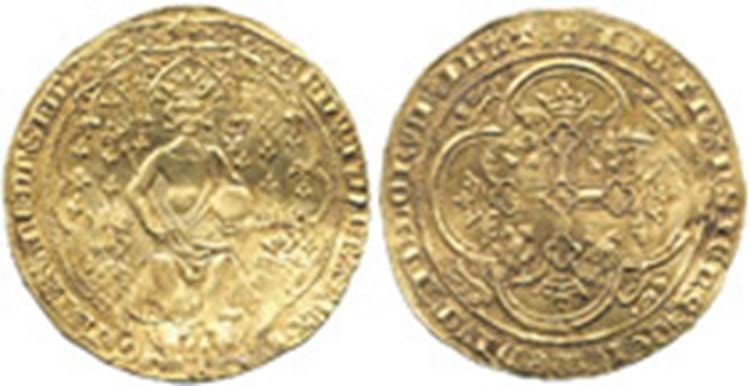
Only two specimens of the Edward III (1327-77) gold double florin or Double Leopard were previously recorded - both found in the bed of the River Tyne in 1857 and now in the British Museum - until another was dug up in February at an undisclosed site.
This third recorded specimen is a slightly different variety to either of those in the British Museum and is the only one in private hands.
As the first large gold coin issued in England, the Double Florin represents a milestone in the history of English coinage. It was emblematic of the might of England before the years of the Black Death and - its design derived from a French gold coin (the masse d'or) of Philip IV of France (1285-1314) - was intended primarily for foreign trade. A few earlier small gold coins of the Anglo-Saxon period are known Ð one of the eight extant was bought by the British Museum last month for around £355,000, after its sale at Spink in October 2004 Ð but at approximately 11/2in (35mm) in diameter this coin is almost twice the size.
It was not, however, successful partly because of the high costs of production, and also as it was an awkward denomination (based on the gold Florin of Florence, it had a face value of six shillings) it did not divide conveniently into the pound. First authorised on December 14, 1343, but replaced by a new coinage of Nobles on July 9, 1344, it was only issued for seven months. It was immediately followed by the issue of gold nobles that, with a face value of six shillings and eight pence (a third of a pound), continued for over 120 years.
It will be offered for sale on June 29 with an estimate of £100,000-150,000. The finder was working with the permission of the landowner who has a joint interest in the coin and the proceeds of the sale will be divided between them.




